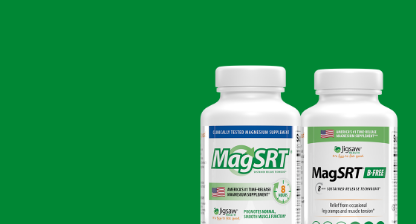What is Healthy Weight?
As a result of our modern lifestyle, many people lead sedentary lifestyles and follow diets that contain mostly processed non-nutritive, high-caloric foods. These behaviors set the stage for weight gain that invariably pave the way for a wide range of chronic conditions—from diabetes to heart disease. And, at the other end of the spectrum, many people have a difficult time keeping their weight up, mainly due to chronic conditions that cause nutrient deficiencies and affect the body’s ability to process food.
If you struggle with weight, it may seem overwhelming to get a handle on it, and so you give up before you start. In order to achieve your healthy goals, it’s best to take mini-steps and record your progress, so that you can visibly see your efforts, and feel great about your achievements towards improving your health.
Assess Your Situation
Knowing what you’re dealing with is the first step in solving any problem. Here are some suggestions for gathering key information before you begin.
Measure your hips, waist, chest, arms, and thighs. By measuring yourself, you’ll be able to set a reference point and actively record your progress as you achieve your weight goals.
Find out your waist-to-hip ratio. Are you an apple or a pear? If you divide your waist measurement by your hip measurement, you will find out your waist-to-hip ratio. The University of Maryland has a calculator that can help you determine your waist-to-hip ratio. This simple calculation helps you identify whether you tend to accumulate fat more easily around your mid-section, or around your hips. Studies have shown that excess fat around your mid-section may increase your risk for chronic conditions such as heart disease. Click here to find out your waist-hip ratio.
Calculate your BMI. In order to get a handle on your weight, it’s important to find out what a healthy weight is for you. One way to assess your ideal body weight is to calculate your Body Mass Index. BMI is a simple mathematical formula that calculates your body fat based on height and weight that applies to men and women. In order to calculate your BMI, try the BMI calculator provided by the National Institutes of Health.
Your BMI score can give you an approximate indication of a healthy weight based on your height. Keep in mind that if you’re very muscular, your BMI may be significantly higher than you would have expected since the formula is unable to account for the fact that muscle weighs more than fat. Ultimately, your ideal weight is individual and personal factors should be considered and discussed with your healthcare professional. For the most part, if you are sedentary and struggling with your weight, your BMI can give you a general idea of where your weight should be.
The NIH lists the following guidelines:
- Underweight = <18.5
- Normal weight = 18.5-24.9
- Overweight = 25-29.9
- Obesity = BMI of 30 or greater
If your BMI is greater than 30, then you should consider changing your diet by following
healthy dietary guidelines and increasing your level of exercise. If your BMI is less than 18, it’s equally important that you find out the underlying causes that won’t allow you to keep a healthy weight. Being severely overweight or underweight will eventually lead to chronic health conditions, if left untreated.
Build a Solid Foundation for Lasting Success
Request baseline testing. Consult your healthcare professional about what types of tests you’ll need before you begin your weight program. Functional testing can help you identify any nutritional deficiencies and hormonal imbalances that may be causing your weight problems. Have yourself tested routinely upon the advice of your healthcare professional, so that you can record your progress. Positive improvements are highly motivational.
Take other simple readings that can motivate you. Monitor your blood pressure, cholesterol, and blood sugar levels. These are important tests, because you can positively change these numbers through diet and exercise. Frequently monitor these items as you change your diet and exercise habits. Many people become highly motivated when they see drops in blood pressure, lower cholesterol numbers, and stabilized blood sugar levels.
Rule out undiagnosed chronic conditions. Many health problems actually cause weight gain or loss, so make an appointment with your healthcare professional and resolve any underlying chronic conditions, before you start any health program on your own.
Give your scale a break. When you start exercising and eating healthy, you may actually gain muscle mass, which is heavier than body fat. The number on the scale may not go down as much as you’d like, but you’ll see a loss in inches instead—and your clothes will start to fit better!
Keep a running chart of the inches you’re losing. Take your measurements periodically and jot down the numbers. Many people are surprised when they see how many inches they’ve lost around their waist, hips, thighs, and buttocks. Record your progress by the way your clothes fit. As your clothes become looser, you’ll feel encouraged.
Throw out your calendar when it comes to weight. Don’t sabotage yourself by setting a date on your calendar to meet unrealistic weight goals. Healthy weight loss is approximately 2 pounds a week. Losing more than 2 pounds a week may have health risks. Stabilizing your weight is a process, and developing healthy habits is a lifelong commitment. Patience and perseverance are more crucial than a specific date on a calendar.
A healthy, well-balanced diet is crucial to your success. Eating well begins with educating yourself about what to eat. Learn more about healthy dietary guidelines.

















